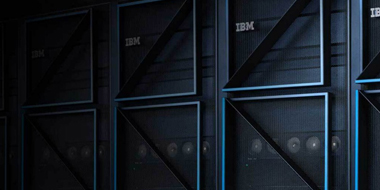Industries
Never sell a ‘no’ thanks to SAP S/4HANA
12/02/2020 | Written by: Stefan Rossieau
Categorized: Generic | Industries | IT Infrastructure
Share this post:
Halfway through this decade SAP will stop supporting SAP ECC. Before this happens, retailers are able to migrate to the new SAP S/4HANA ERP system at their own pace. Apart from the expiration of support there are more reasons to switch on time. For instance, S/4HANA also provides real-time insights into the inventories and can be used on tablets, smartphones and PDAs. IBM is able to streamline the migration to S/4HANA with its BLUEFIELD Transformation method.
S/4HANA is the successor of the SAP ECC ERP package. The new version of the SAP ERP software uses its own in-memory platform. It allows large amounts of data to be processed much quicker than in ECC. Another difference between the old and new SAP suites, is the SAP Fiori user interface. This is more user-friendly, which is more pleasant to work in and stimulates users’ productivity. On the other hand, SAP Fiori is also very suitable for mobile applications. Based on SAP Fiori, developers are able to build applications for PDAs and tablets for example.
Real-time insights
Everything that passes the check-out is immediately processed in S/4HANA. It means that retailers and their logistics partners have real-time sales data and up-to-date insights in current store inventories. That is a significant advantage compared to SAP ECC, which only tells retailers the next morning what has been sold in order to generate reports, by which time the information is probably already outdated.
No empty shelves
Retailers working with SAP ECC or S/4HANA often combine this ERP system with SAP Forecasting & Replenishment (F&R). This module analyses the sales data in combination with external data, such as the weather forecast and numbers of visitors of previous years and weekends. For example, this allows retailers to precisely forecast which articles they need in which quantities in December in their shelves and the warehouse. This means lower inventory costs and shop owners never have to sell ‘no’ anymore.
Mobile-friendly
SAP ECC is known for its many tabs, buttons and pages. The new Fiori-user interface has an easier to use structure and a more pleasant look-and-feel. This makes S/4HANA more user-friendly and better tailored to user requirements. Because the interface is suitable for mobile devices, retailers can also make their ERP system available to personnel on the shop floor. For example, items can be scanned with a PDA or tablet to immediately see what is in stock and possibly order new products. S/4HANA allows you to do this throughout the day which means retailers don’t have to wait until the end of the day to make the balance and place possible orders. Result: time savings, quicker deliveries and no empty shelves.
Due to the complexity and duration, many retailers do not look forward to the migration to S/4HANA. Unnecessarily, because IBM has tried and tested methods to streamline the switch. IBM primarily works with the so-called ‘core model retail company’; a retail specific basis for S/4HANA. IBM lays the foundation for a faster customised implementation with this preconfigured model. In addition, retailers are able to streamline their migration with IBM S/4HANA BLUEFIELD™ Transformation. This methodology results in a 75 percent faster adoption and implementation of S/4HANA.
Streamline your migration with IBM S/4HANA BLUEFIELD™?
Contact Kareen.Owusu@ibm.com
For more insights on the Retail and Consumer industry, please visit our website.

SAP Project Manager & Senior Managing Consultant at IBM
Automate work and accelerate business growth
Many companies need help to navigate the rapid changes that define today’s business environment. To improve their responsiveness and flexibility, they are looking for new ways of conducting business, rethinking their processes, and investing in digital transformation projects to increase the robustness of their operations. They rely on business automation technologies to cut out repetitive […]
Sustainability and the technologies enabling the transition
Creating a sustainable future demands significant technological innovation to decarbonize society, restore biodiversity and ecosystem health, foster thriving oceans for sustenance and economic growth, remove atmospheric carbon, transition to sustainable agriculture, and advance eco-friendly cities that align with our vision for a better future. Generative AI has achieved much in recent years and now surpasses […]
Hardware is not dead – Power10 is paving the way for hybrid cloud and energy savings
IBM has recently launched the first Power10 server. A new generation of servers, which due to changes in structure, components and functionality, provide significant improvements in terms of performance, computing power and energy consumption. These servers are paving the way for a more sustainable and flexible business based on a hybrid cloud. But what […]


